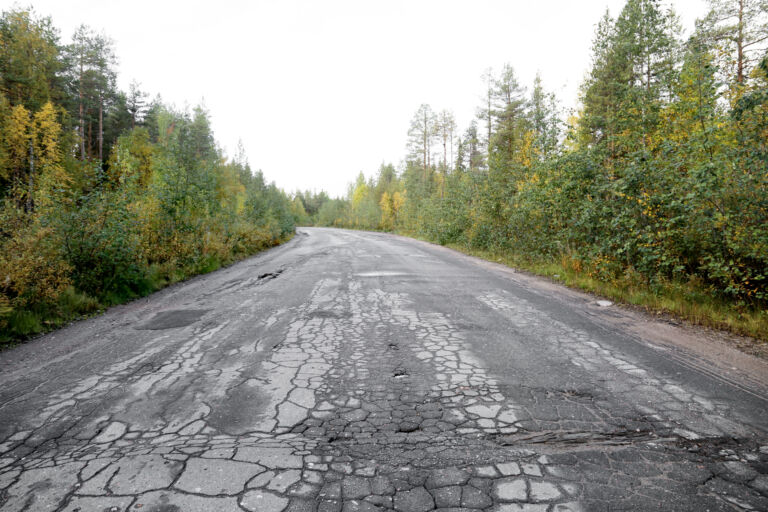- A government commission has produced several recommendations to increase transportation revenue, despite the state gas tax having more than doubled since 1988
- The NC DOT, however, has been found to lack adequate financial oversight
- Rather than finding ways to raise more funds from North Carolina drivers, legislators should first ensure the DOT has its financial house in order
Citing “mediocre” transportation infrastructure, a state government commission wants North Carolina to increase transportation spending by 40 percent over the next decade.
According to an AP report, “The North Carolina First Commission, which was formed nearly two years ago by Gov. Roy Cooper’s then-transportation secretary, suggested several options to locate at least $2 billion more annually to address challenges brought by a surging population, congestion and aging secondary roads.”
On Monday, Jan. 11, the commission concluded its hearings without making any formal legislative proposals; however, it did submit a 173-page report with several recommendations for spending “at least $20 billion over the next 10 years.”
Committee Chairman John Torbett (R-Gaston) stated that the final report includes “a request that both caucuses in the House work collectively to determine some strong fundamental revenue shifts … to better seal the future of funding for transportation.”
The timing of the recommendations, however, seemed to critics to be another taxpayer bailout of a poorly run state agency.
DOT mismanaging money, audit finds
A state audit released in May 2020 concluded that the NC Department of Transportation had spent $740 million more than it had planned last year, while largely blaming a lack of sound oversight of the agency’s finances.
The audit came on the heels of a taxpayer bailout of the agency in the fall of 2019, in which more than $200 million was transferred from the state’s General Fund to help shore up the DOT’s struggling finances. Included in the bill authorizing the funds was the requirement that the DOT undergo the audit.
It hardly seems sensible to increase funding to the DOT via increased taxes and fees until they have proven to be a more responsible steward of the public’s money. Rewarding them with yet another form of a taxpayer bailout would serve to enable their irresponsible behavior.
Gas taxes have more than doubled since 1988
House Bill 77, passed in 2020, set the current floor for the statewide gasoline tax at 36.1 cents per gallon. That means the gas tax cannot fall below that rate, but it can rise above it. For decades, the state gas tax had been set by a formula tied in part to the wholesale price of gas, which means that the higher the price of gas, the higher the gas tax. Conversely, in times of low gas prices, the gas tax would be lower.
The rate of 36.1 cents per gallon established last year marked a 20.7 percent increase in the gas tax since 2007 and a whopping 130 percent since 1988. And with gas prices sitting at low rates for most of 2020, the tax floor meant that the gas tax wasn’t also allowed to drop, costing North Carolina travelers tens of millions of dollars.
Indeed, the past few decades have seen several increases in the gas tax, with one of the most notable hikes occurring in 1989, when the tax was raised by 31 percent.
Below is a summary of the significant gas tax increases in North Carolina since 1985:
- 1986 — Legislation raised the gas tax by 2 cents per gallon plus added a variable component equal to 3 percent of the wholesale price of gas.
- 1989 — The legislature increased the gas tax rate to 17 cents per gallon plus 7 percent of wholesale price. It had been 15.7 cents per gallon over the previous six months. The change increased the gas tax to 20.9 cents per gallon, good for an increase of 31 percent.
- 1991 — The gas tax was increased by half-cent per gallon.
- 2007 — Legislation capped the gas tax at 29.9 cents per gallon.
- 2009 — Legislators converted the gas tax cap into a floor of 29.9 cents per gallon. Rising gas prices in subsequent years enabled the variable tax to increase to 38.9 cents per gallon in 2012.
- 2015 — The gas tax was set at 35 cents for the first half of 2016, to fall to 34 cents for the next six months. After that, it was to increase every six months by a formula combining population growth plus a combination of energy price increases and overall inflation.
- 2020 – The gas tax floor was set at 36.1 cents per gallon.
Committee’s recommendations to increase revenues
Currently, the state’s gas tax rate of 36.1 cents per gallon generates nearly 60 percent of all DOT revenue, with federal funds and DMV fees providing most of the rest.
The committee’s recommendations of course include increases to the gas tax as well as certain DMV fees. Other suggestions include taxing ride-sharing companies like Uber and Lyft, creating road-impact fees for commercial delivery companies like Amazon, and transitioning away from the gas tax to a tax on vehicle miles traveled. The final suggestion would move away from charging drivers based on the amount of gas they buy to the number of miles they drive in the state, a move that would capture more revenue from drivers of highly fuel-efficient or electric vehicles.
Conclusion
North Carolina state government has a lengthy track record of aggressive gas tax hikes, but the DOT continues to claim it needs still more money.
Rather than raising taxes and fees on North Carolina travelers to bail out the fiscally irresponsible DOT again, North Carolina legislators should first ensure the transportation department is able to exercise sufficient oversight over the tax and fee dollars it is entrusted with.

